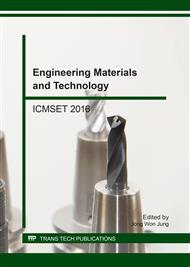p.505
p.511
p.517
p.522
p.528
p.535
p.541
p.547
p.554
Influence of Aging on Oil Rejuvenated Binder
Abstract:
The presence of aged binder in asphalt mixtures containing high amount of Reclaimed Asphalt Pavement (RAP) is the main reason why the technology of oil rejuvenation (modification) was introduced. When the recycling rate generally exceeds 25 %, it is essential to modify aged binder characteristics in order to guarantee that asphalt mixture performance remains the same as in the case of the virgin mixture. Reclaimed asphalt binder is much stiffer compared to the virgin binder and therefore it is perceived to be susceptible to cracking at low temperatures. The aim of this study is to compare various oil modifiers and evaluate their effects on rheological characteristics before and after the aging. Four different oils were blended together with an artificially aged binder in concentrations which ensure that resulting blends have similar properties as the virgin reference binder. The effect of aging during the production process was simulated by the RTFOT (Rolling Thin Film Oven Test) procedure, long term aging was then simulated by modified RTFOT test with prolonged exposition period. The blends performance assessment was carried out by the frequency sweep test on the Dynamic Shear Rheometer (DSR) and by the evaluation of the critical temperatures on the Bending Beam Rheometer (BBR). The results indicate that addition of oil rejuvenators did not negatively influence binder stiffness at higher temperatures and at the same time enhanced its properties at low temperatures significantly. However, due to the aging effect the difference between stiffness critical temperature and m-value critical temperature increase considerably which might indicate decreasing colloidal stability and lower ability to relax induced stresses.
Info:
Periodical:
Pages:
528-534
Citation:
Online since:
June 2017
Authors:
Price:
Сopyright:
© 2017 Trans Tech Publications Ltd. All Rights Reserved
Share:
Citation:


